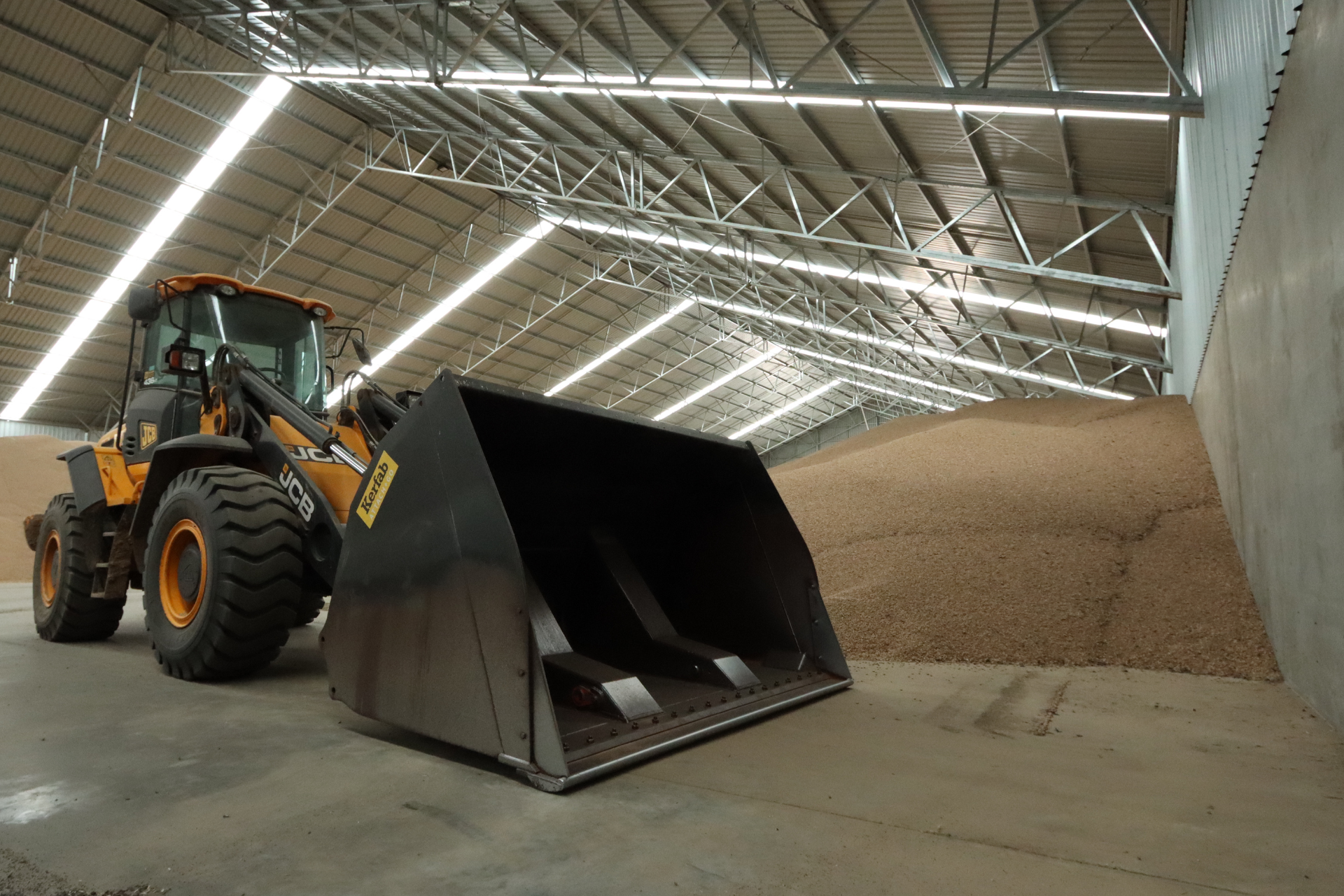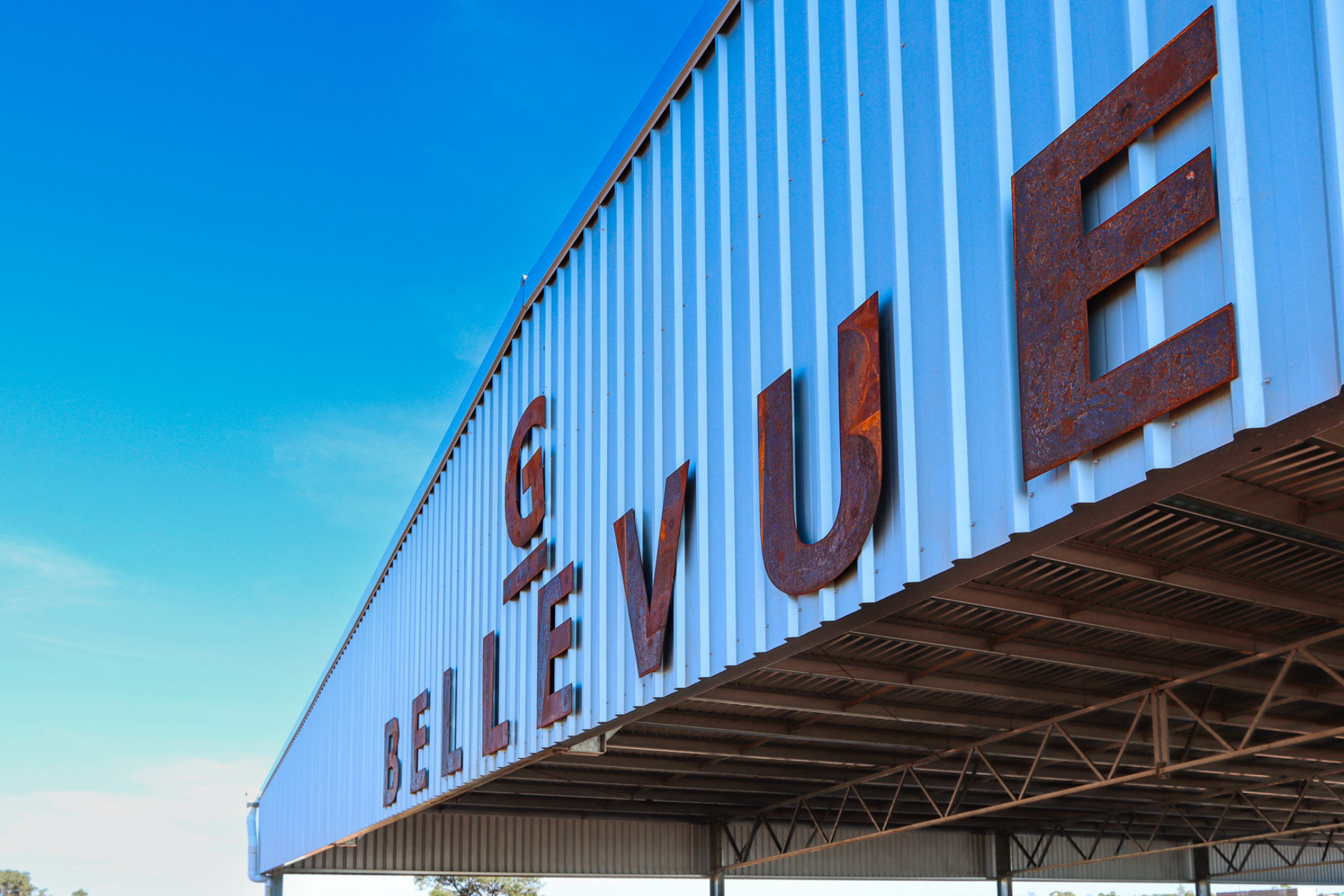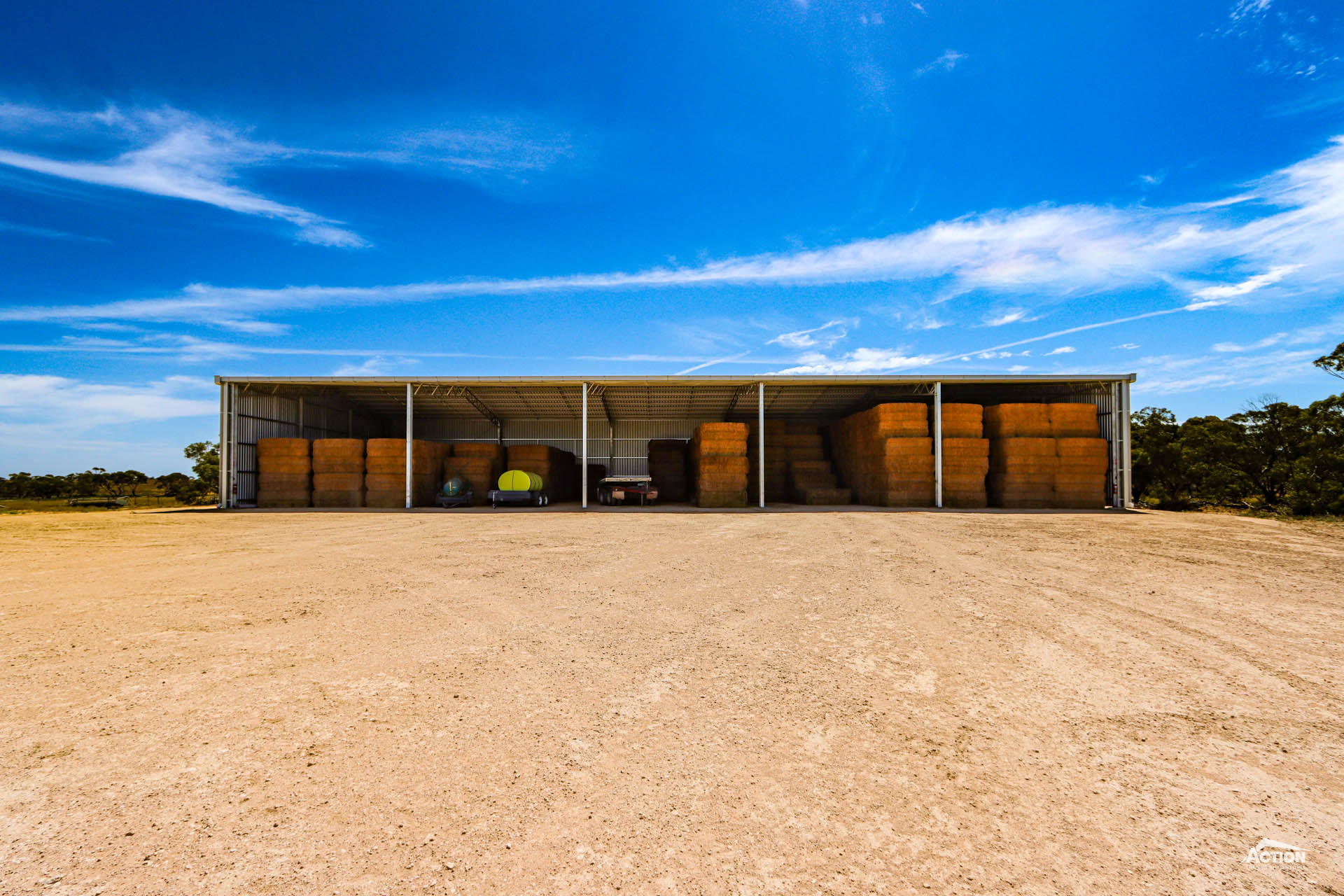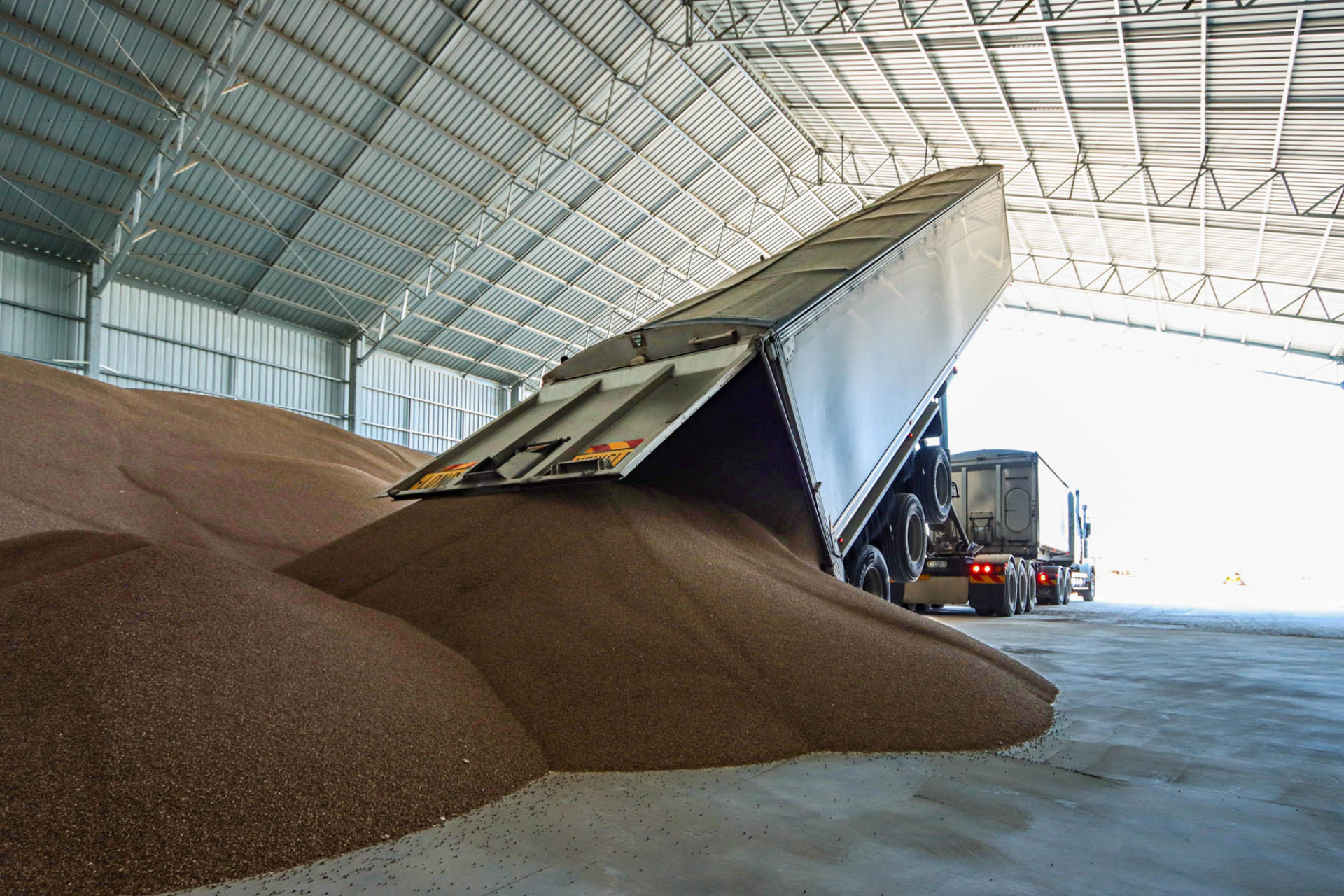Are you looking at ways to increase your on-farm grain storage? Researching grain shed designs? Wondering about grain shed wall options? Which is best?
If you are in the market for a new grain shed, you likely have questions about best-practice designs and configurations.
We have included information on many of these discussion points in our Learning Hub, such as: what size grain shed do I need? and how much does it cost to build a grain shed?
Grain shed walls are another feature that our building consultants are often asked about.
What are the different grain shed wall options? Which is best and why?
If you are also asking these questions, then this is the article for you. In this article, you’ll learn about what options are available and which is best.
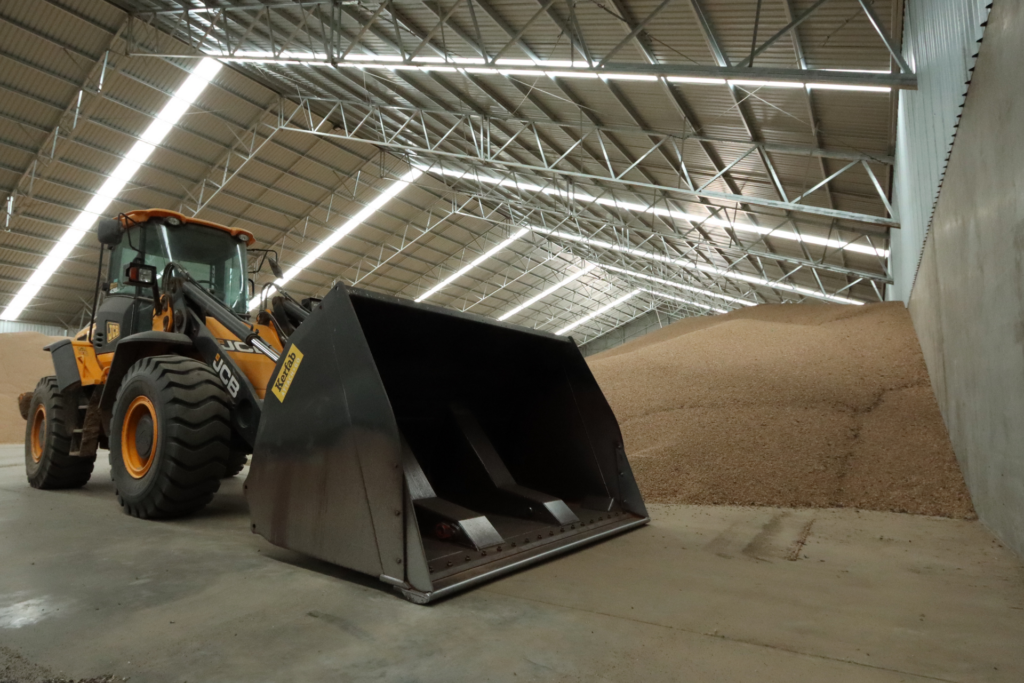
What Are The Options For Grain Shed Walls?
There are four main options for grain shed walls:
1. Inside-out walls
2. Concrete panel walls
3. Combination walls
4. Temporary walls
Keep reading to learn about each in more detail.
What Are Inside-Out Walls?
Inside-out grain shed walls are built by installing cladding to the inside of the shed frame rather than to the outside of the shed frame.
The wall girts are spaced at closer intervals than a standard shed design to allow grain to be stored to 3 metres high. Struts and intermediate posts are used to support the grain load.
This allows grain to be stored up against the wall.
These walls are used in traditional inside-out grain sheds where the complete shed is clad this way.
The other option is to install the internal cladding just to the required grain wall height and have the outside wall fully clad. The grain shed completed for Read Farming is an example of this.
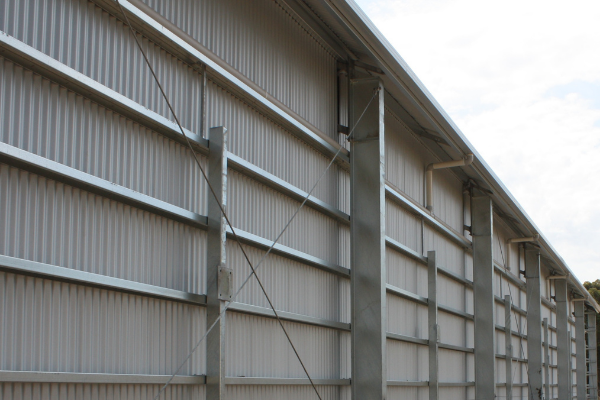
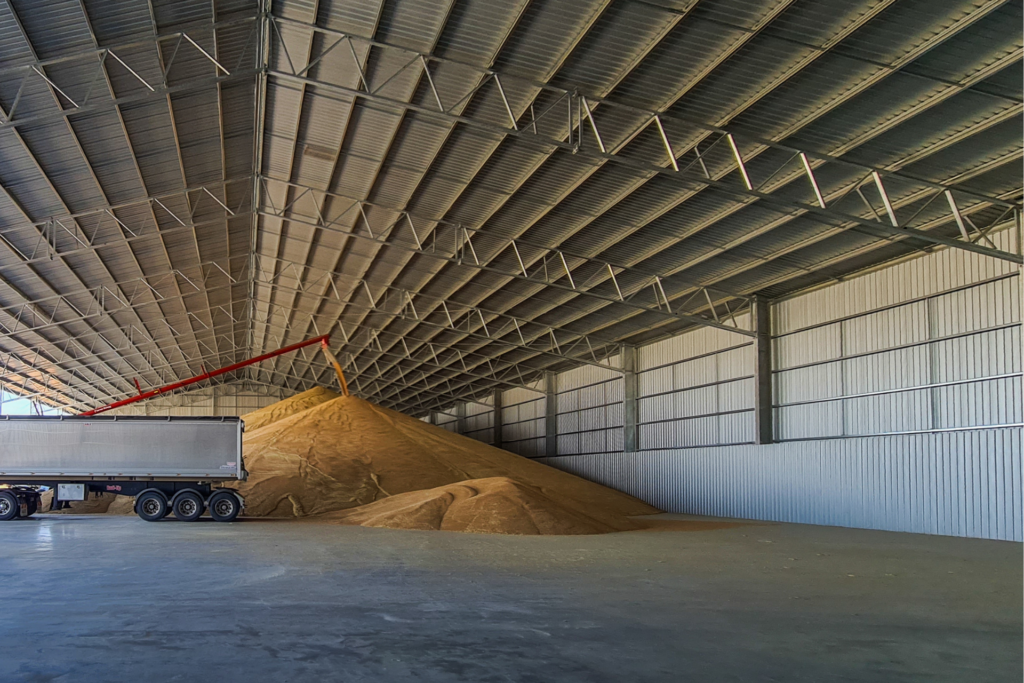
Advantages Of Inside-Out Walls
There are several advantages to the traditional inside-out design that have made them popular over the years:
- Can be more cost-effective than other options such as concrete panel walls.
- Can be used for off-season machinery storage.
- Provides a clean skin inside the shed with minimal dust collection.
- Provides safe and effective storage for most cereal grains.
Disadvantages Of Inside-Out Walls
Inside-out walls aren’t without disadvantages.
Some potential downsides to building a grain shed with inside-out walls are:
- Can’t be repurposed for fertiliser storage due to the corrosion risk.
- There is an increased risk of cladding being damaged by machinery.
- It is not a suitable storage option for all grain types.
What Are Concrete Panel Grain Shed Walls?
Concrete panel walls for grain sheds are pre-cast concrete panels installed to support the grain load inside the shed.
These panels are usually three metres high and are fastened to the inside of the shed column.
Extra supporting steelwork is installed to accommodate the concrete and grain loads.
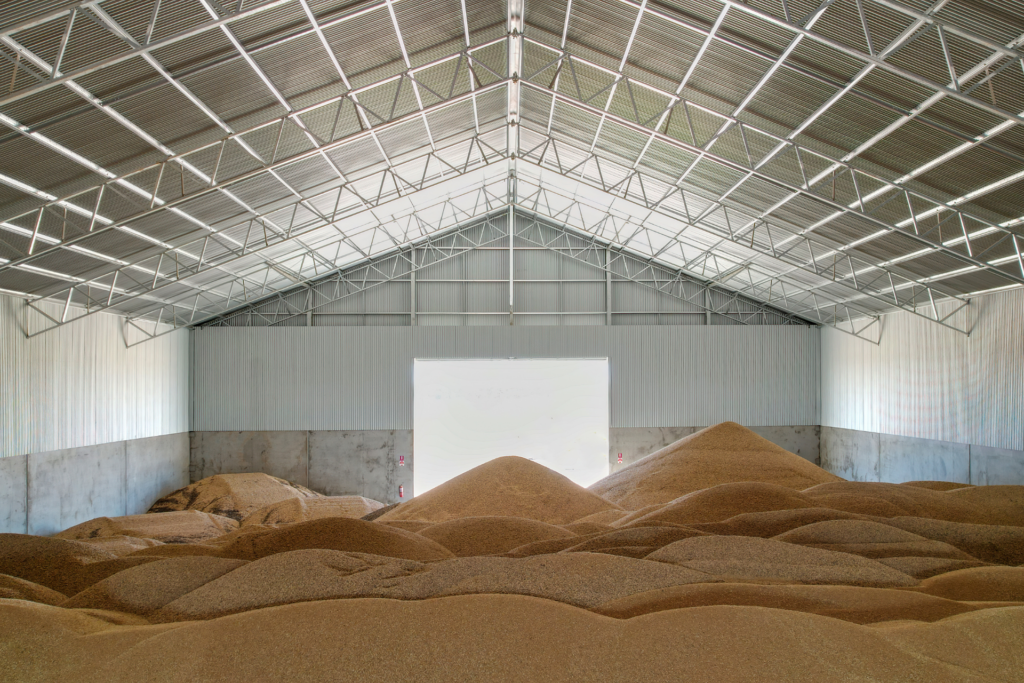
Advantages Of Concrete Panel Grain Sheds
There are considerable advantages to incorporating concrete panel walls in your grain shed which make them the go-to option.
Some of these advantages include:
- Additional concrete panels can be installed for segregation.
- Can be retrofitted to an existing shed.
- Can be used to store fert or machinery when grain storage isn’t a requirement.
- Provides an effective barrier against pests and moisture.
- Increases the longevity of the shed by protecting the cladding from machinery damage and corrosion (if the shed is used for fert storage). This also means that a concrete panel wall grain shed has the lowest long-term cost.
Disadvantages Of Concrete Panel Grain Sheds
There are no significant disadvantages of concrete panel walls. The main drawbacks are:
- Higher initial cost compared to other wall options.
- Not suited to grain types where strict segregation and or/fumigation is a requirement. This is true for any grain shed wall option.
What Are Combination Walls?
Combination walls are essentially a combination of inside-out walls with a concrete plinth or concrete bump rail installed inside the shed along the base of the walls.
Advantages Of Combination Walls
While not a common option, there are some potential advantages of combination walls:
- Helps protect the cladding from machinery damage.
- Seals the shed off for vermin-proofing.
Disadvantages Of Combination Walls
Similarly, there are also some potential disadvantages of combination walls:
- Can be labour-intensive meaning they are not always a cost-effective option.
- Don’t provide protection for the full height of the wall.
What Are Temporary Walls?
Temporary or removable walls such as self-supporting steel panels or self-supporting concrete panels are an option for temporarily converting an existing storage shed for grain storage.
They can also be used for segregating different grains in the short term.
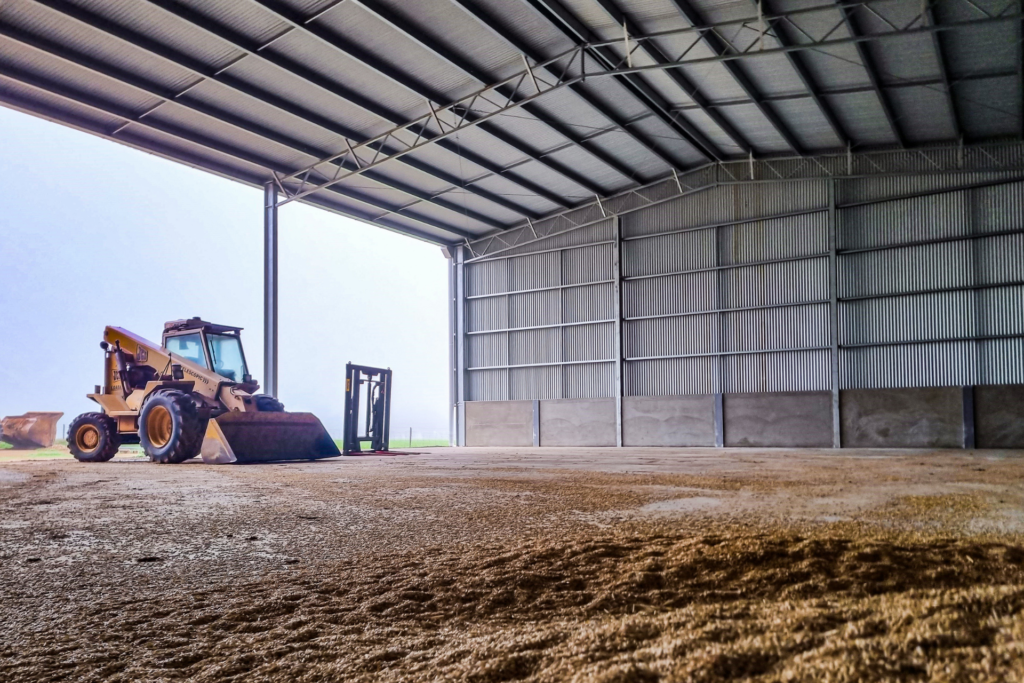
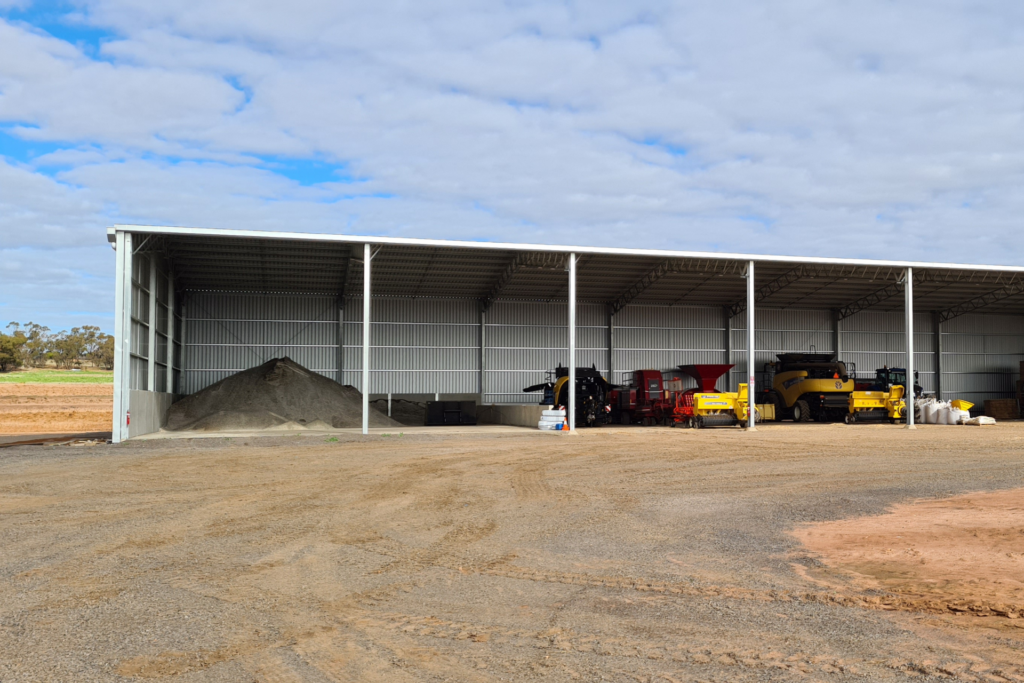
Advantages Of Temporary Walls
The main advantage of removable grain shed walls is that it allows you to utilise existing shedding, making it an economical option and providing storage flexibility.
Temporary walls are a popular option for multi-purpose storage sheds with one or more bays dedicated to grain or fert storage
Disadvantages Of Temporary Walls
- Less storage space due to the self-supporting frame
- Not designed for long-term storage
The Verdict – What Is The Best Grain Shed Wall Option?
That is an overview of the different wall options available for grain sheds.
So, which is best?
Like any decision, there will be several factors that will come into play that will determine what wall option you should choose.
For example, consider your budget and your current and long-term storage requirements. Will you need fertiliser storage? Segregation?
Having said that, concrete panel walls are widely considered to be the best-practice option for grain sheds. They help provide effective grain storage and contribute to the longevity and versatility of the shed design.
Additionally, concrete panels have no real downside. While they can be more expensive in the short term, concrete panels have the lowest long-term cost.
If your grain is suited to shed storage, our recommendation would be to build a concrete panel wall grain shed.
We have collated some other resources that may assist you with your grain shed project planning.
Relevant Resources
- How Much Do Concrete Panels Cost?
- Grain Storage Calculator
- Featured Project – 27 Metre Span Concrete Panel Grain Shed
- How To Budget For Your Shed Build
For more information and resources, browse the Learning Hub.
To discuss your grain shed project and design options call us on 1800 687 888 or submit a REQUEST A QUOTE form.

